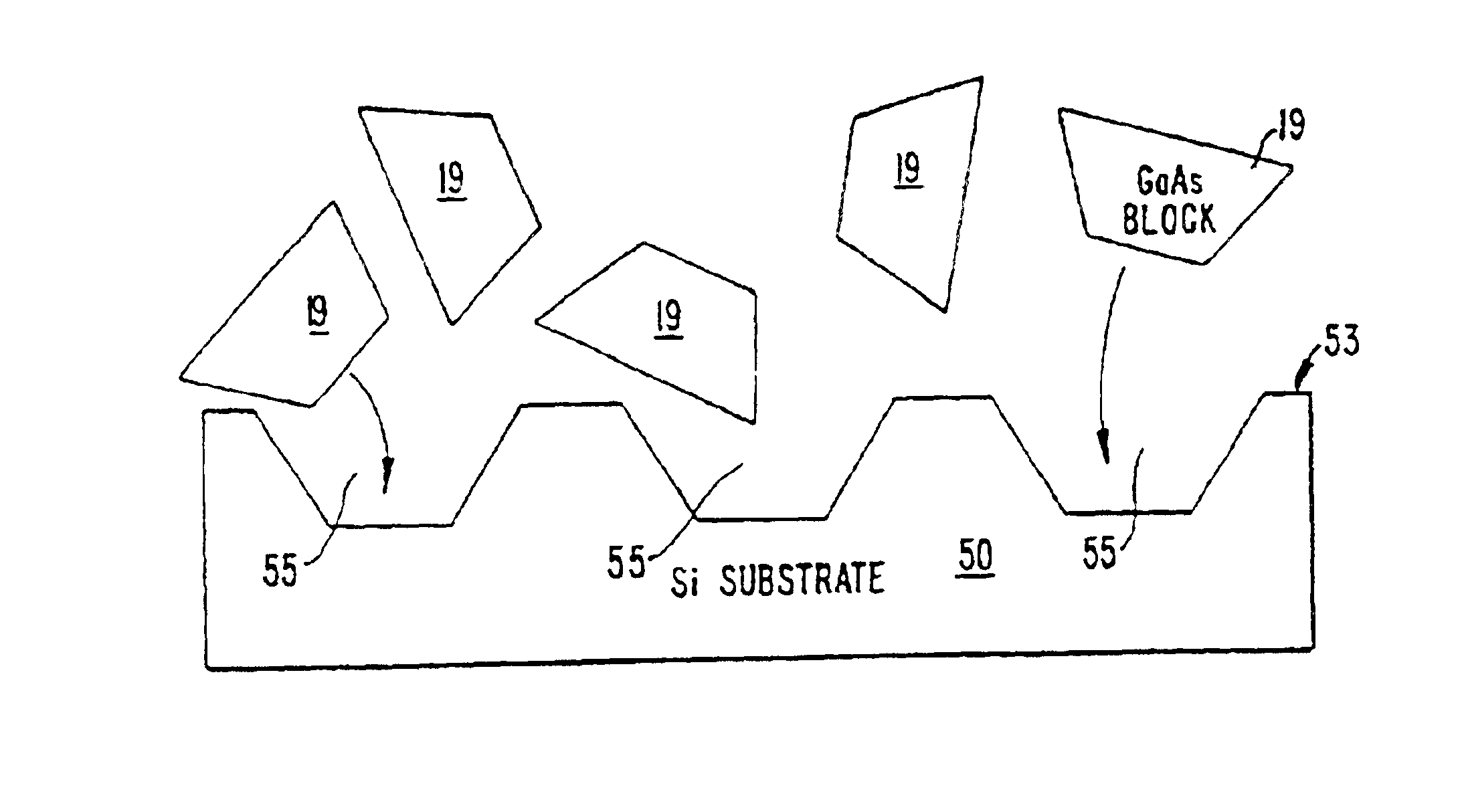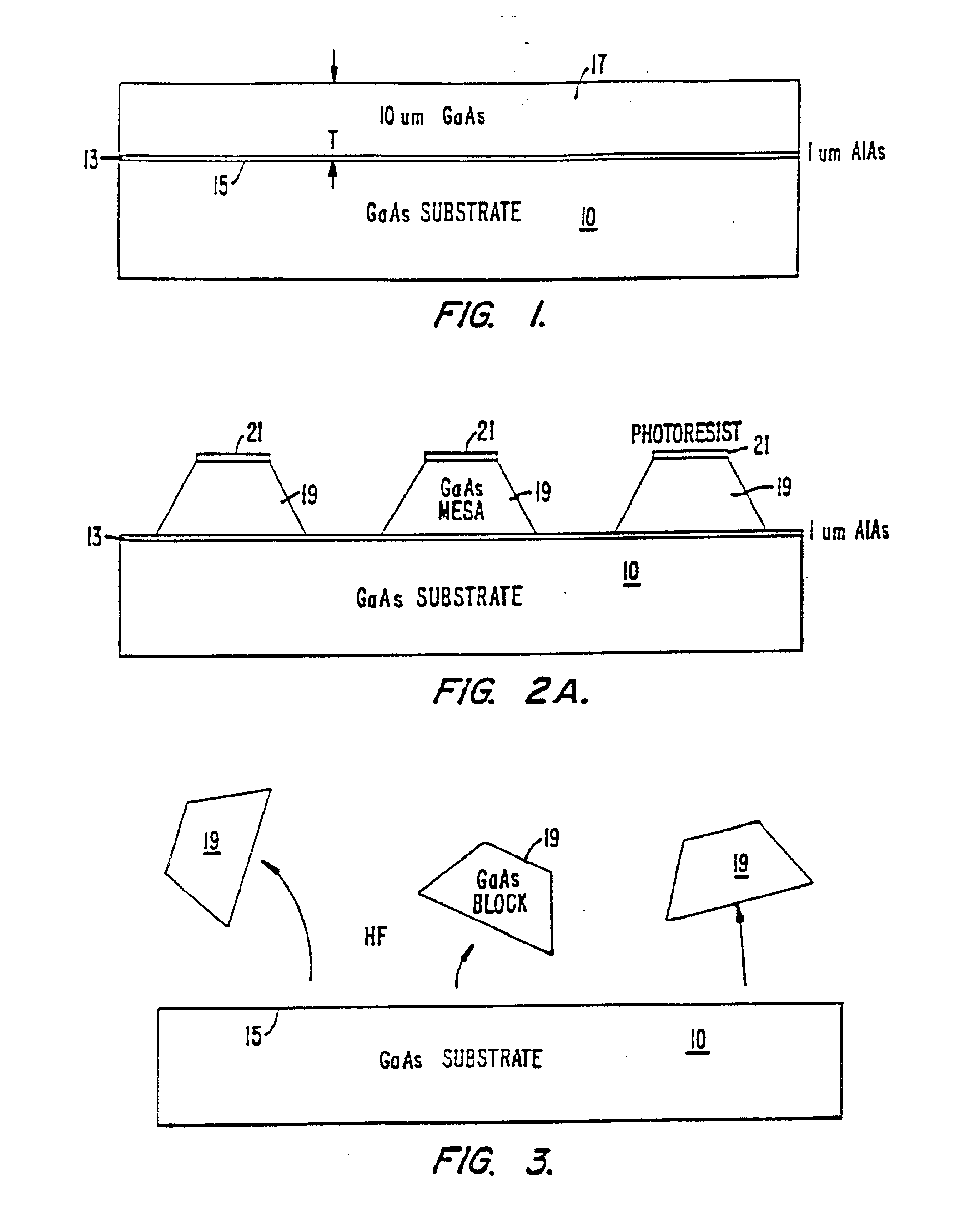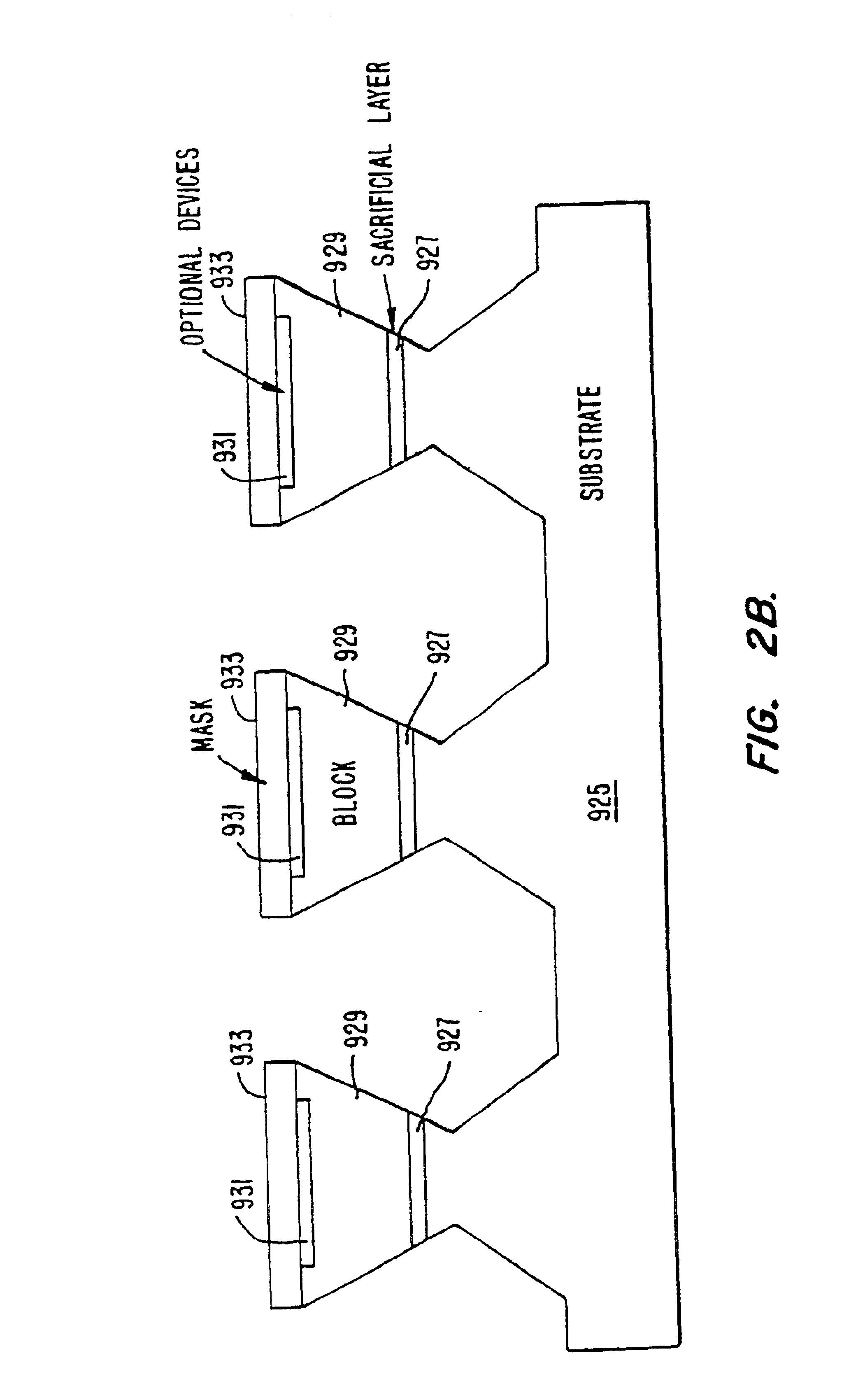Method and apparatus for fabricating self-assembling microstructures
a microstructure and self-assembling technology, applied in the field of electromechanical integrated circuits, can solve the problems of inefficient use of precious die area, inability to realize the effect of reducing the cost of processing, and requiring special techniques, chemicals, equipment,
- Summary
- Abstract
- Description
- Claims
- Application Information
AI Technical Summary
Benefits of technology
Problems solved by technology
Method used
Image
Examples
examples
To prove the principle and demonstrate the operation of the method and structure, a gallium arsenide block in the form of a diode was assembled onto a silicon substrate and operated.
In a gallium arsenide example, a slurry including gallium arsenide blocks were transferred such that the blocks self-aligned into recessed regions located on a top surface of a silicon substrate. The steps for such method included forming the gallium arsenide blocks, transferring the blocks into a solution forming a slurry, and transporting the slurry evenly over a top surface of a silicon substrate having recessed regions. The shaped blocks generally tumble onto the top surface of the substrate, self-align and engage with a recessed region having a complementary shape.
In creating the silicon substrate, a solution of ethylenediamine pyrocatechol pyrazine (EDP) or potassium hydroxide (KOH) produced recessed regions having a trapezoidal profile or inverted truncated pyramid shape. Each solution created tra...
PUM
| Property | Measurement | Unit |
|---|---|---|
| length | aaaaa | aaaaa |
| length | aaaaa | aaaaa |
| length | aaaaa | aaaaa |
Abstract
Description
Claims
Application Information
 Login to View More
Login to View More - R&D
- Intellectual Property
- Life Sciences
- Materials
- Tech Scout
- Unparalleled Data Quality
- Higher Quality Content
- 60% Fewer Hallucinations
Browse by: Latest US Patents, China's latest patents, Technical Efficacy Thesaurus, Application Domain, Technology Topic, Popular Technical Reports.
© 2025 PatSnap. All rights reserved.Legal|Privacy policy|Modern Slavery Act Transparency Statement|Sitemap|About US| Contact US: help@patsnap.com



